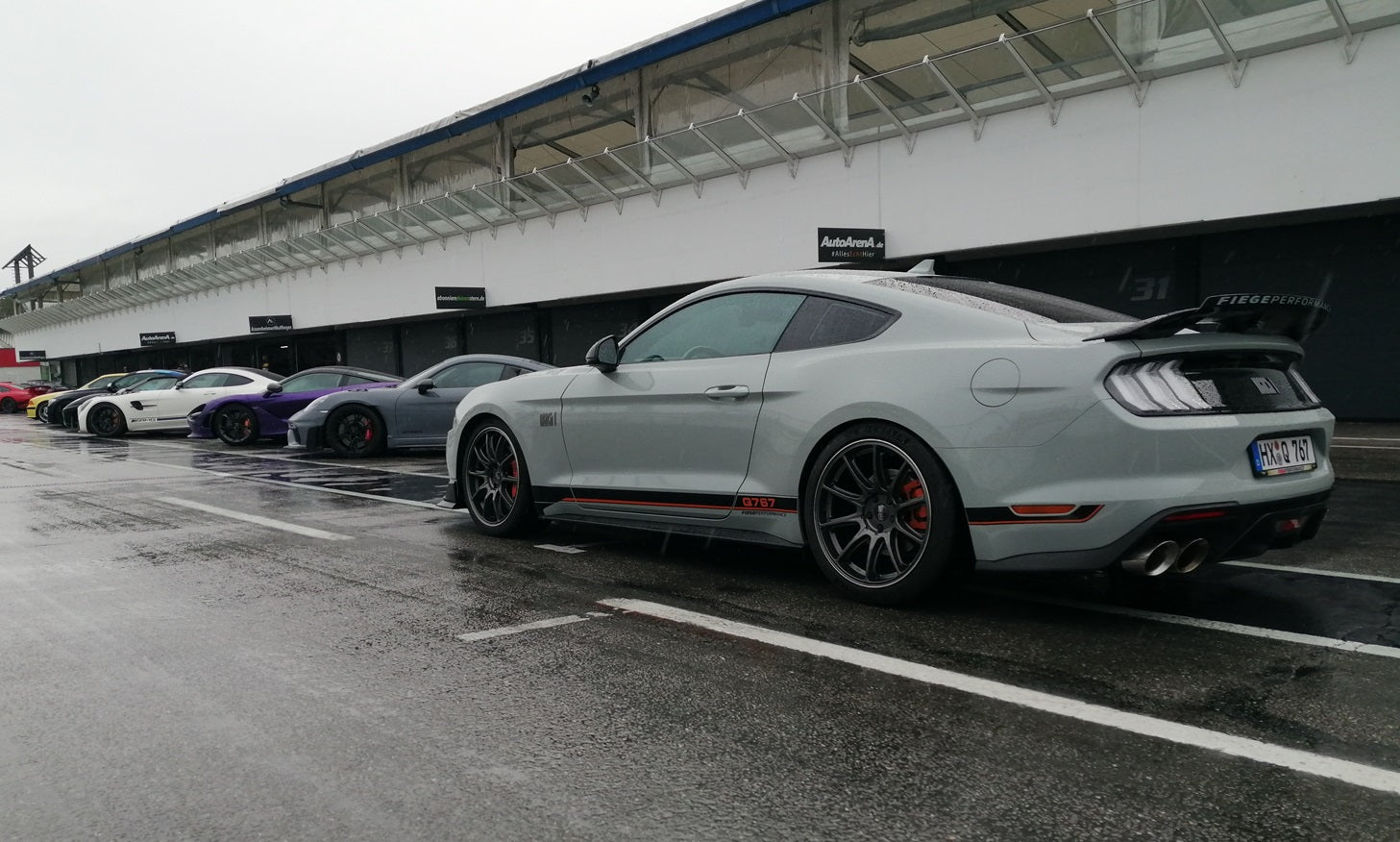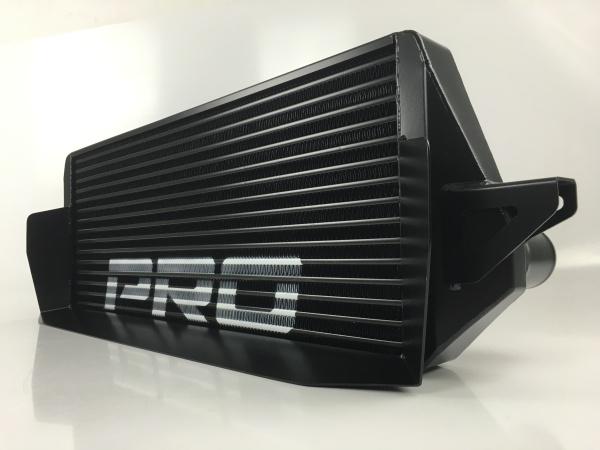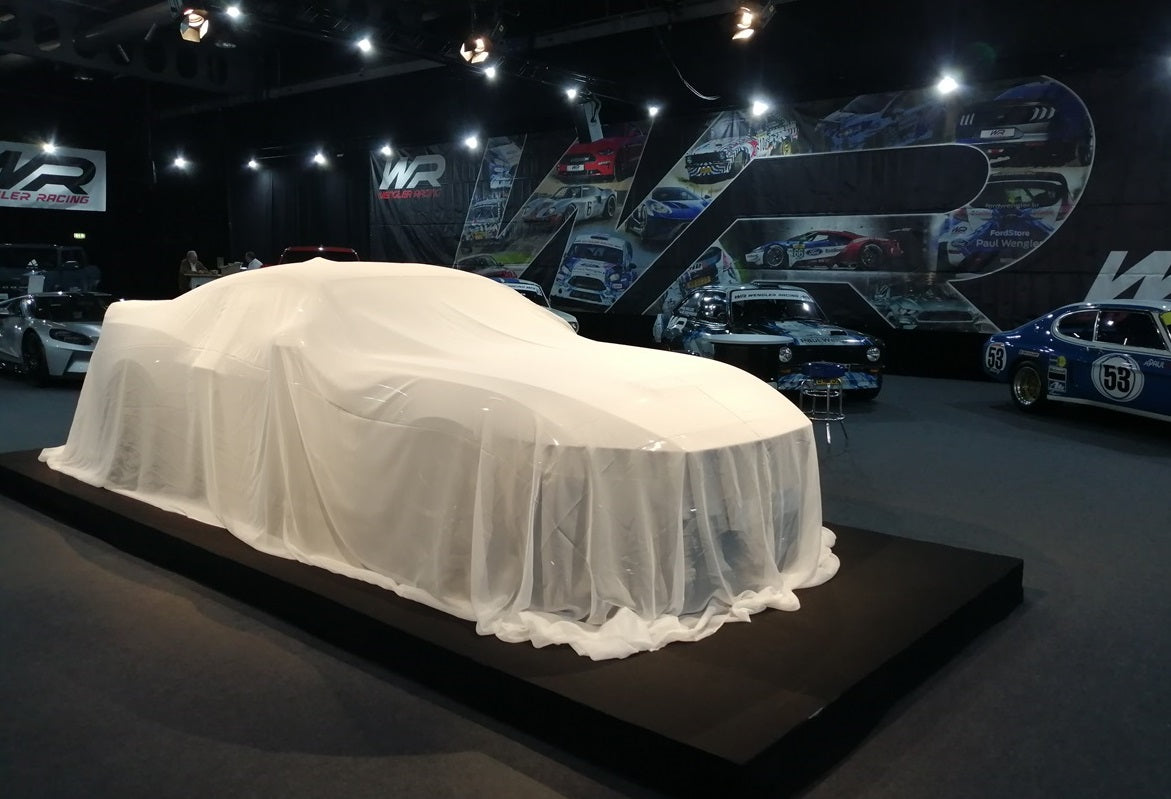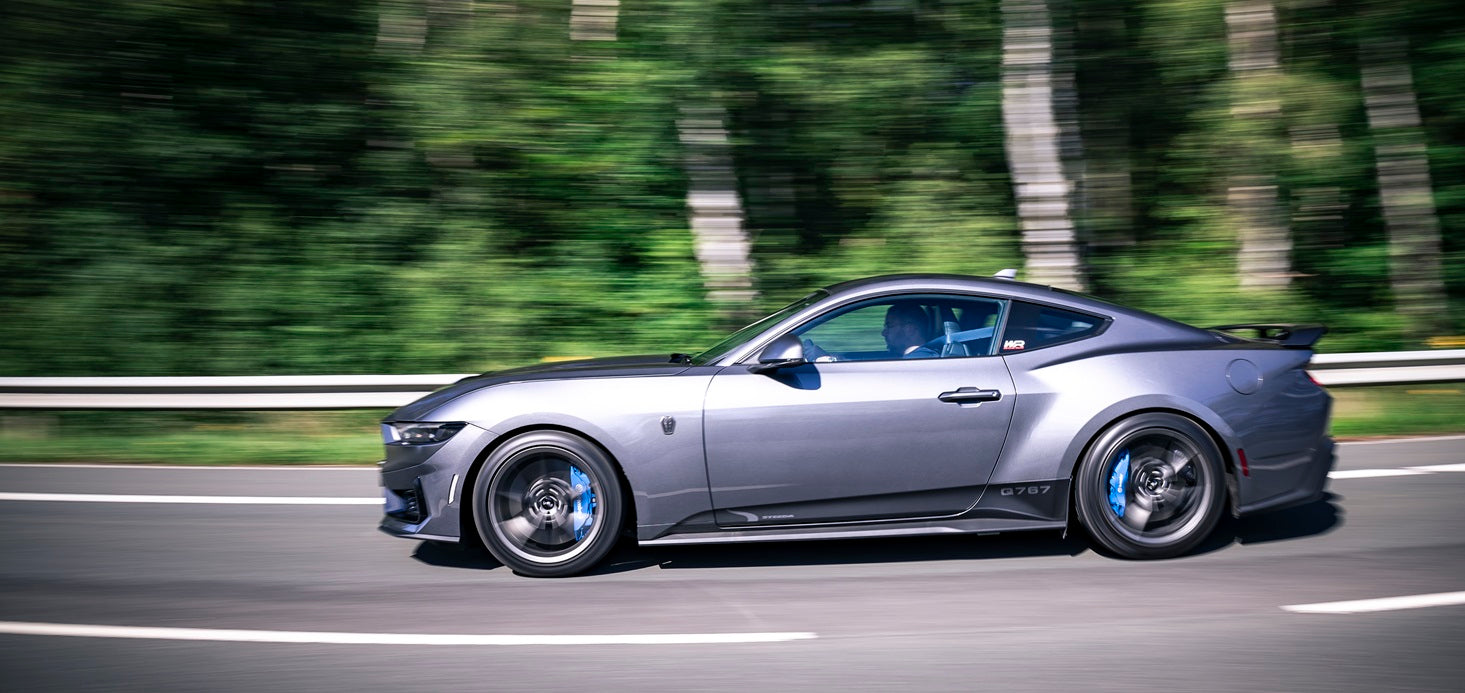
Track Day Tips: Taking it Further
The first step you need to take if you haven't done so already is to read our "Track Days Tips - The Basics" post. If you want to try some drag racing then take a look at our Drag Day basics guide here.
Assuming you have done that, and you have also taken your Mustang or other fast Ford along to your first few events, you might be thinking how to take things further or want to get more advice on how to develop and keep things exciting. After all, we know from the first guide that Track Days ARE NOT RACING!
Well the good news, is that they can be if you want them to be and you go to the right days. That's not an invitation to declare your next track day a race and then claim you won, but it means that if you want to add a sprinkling of competition to your driving you can do so quite easily.
Some track day organisers will offer days with a "time attack" type element where laps are timed and registered (unlike normal track days where timing is often frowned upon or even outright forbidden). Or you can seek out specific "against the clock" type events, which can allow you to compete with your car, but without the pressure / risk of other cars on the circuit with you. There are a number of options here. Auto Solos, Sprinting / Auto Cross and Hill Climbs and of course "Time Attack" itself. These are basically the same idea. who can complete a lap or a course the fastest, and are often split up into categories which you can enter according to your car and or experience.
Auto Solos tend to revolve around a slower speed very tight and complex coned circuit and reward very controlled driving and good course recognition and judgement. Sprinting is often round a coned circuit and opens things up a lot more to build in more speed but is still often in a fairly condensed format meaning the gearing and top speeds tend to stay fairly low.. no long straights here! Hill Climbs are just that, start at the bottom of a road going up a hill and see who can get to the top fastest. Famous examples include the Goodwood Hillclimb and Pikes Peak hillclimb. These might be a bit of a reach for your first event but it shows just how serious these types of racing can get! Time Attack takes the format to its "final stage" and is usually run on proper race tracks and is all about setting the fastest lap on the day. In essence a qualifying session with no race.
The Goodwood Festival of Speed was built around its hillclimb event.

The best way to get involved in events like this is to join your countries race organisation, for example the UK's which now goes under the banner of Motorsport UK. Their website is a wealth of information and they will help you find local clubs and events and also allow you to apply for your basic "Race Licence". Yes its official! You ARE a racing driver! For the entry level licence it's usually as simple as sending in a photo, some information and a small fee. For more serious events you may need a higher rated licence for which you will have to do a test on track.
I used to love taking part in Autocross / Sprinting and the Steeda US team love it too, as its a very simple and accessible form of motorsport you can use your street car for. No need for a full roll cage and million dollar budget! In fact many race meets have classes specifically for fully stock, unmodified cars and another for lightly modified cars. But you will be surprised at just how seriously the higher up classes can take it and you will enjoy hanging around and seeing some serious cars in action!
Here is a video of the Steeda Q350 Sport ecoboost Mustang test car in action:
Of course you don't have to move on to competition. Track days are great fun, pretty affordable and give you a LOT of driving time for your money. There is no pressure, and you can really learn the limits of your car and improve your driving ability lap after lap. Practice and repetition helps in all things. As you do more track days you will want to improve though, and that's where some changes to your car can help you. The right modifications and upgrades will help you maintain reliability, give you increased confidence in the car and allow you to go faster and have more fun. You can skip the events section below and move onto the car modifications part if you want...
Event Tips.
Let's say you have got your licence, joined your local club and are ready for your first event... What to do? Well simple really, it's just like your first track day tips. Check out and prep your car before you go. Oil, brakes, tyres, wheel nuts, no loose things under the seats etc. When you get there pay close attention to the staff and marshals and don't be afraid to ask questions. Check out the track layout, and try and visualise and learn it well. This is important as the BIGGEST difference in a proper competition day compared to a track day is that you can get a LOT less driving and when it happens its fast, intense and all go. As there is usually only single cars on track (or maybe two if the track layout allows) it takes a while to run through the competitors. So you may only get a few runs on the day.
Again the same rules apply as per our basics guide. Don't try and win on run number 1. Set a nice pace and make sure you have learned the track properly.... After all a really fast run where you went the wrong way and missed a gate wont count! Try and build your speed and pay close attention to what others are doing and use the time in between runs to talk to your fellow drivers.
Also make sure you understand what the event requires. As well as your new race licence you may need a proper FIA certified helmet and gloves, and maybe also race boots and possibly even a race suit. These can easily be sourced and good race shoes are pretty important for good car control anyway so a worthy investment if you are doing a few days, and all track days require helmets, and I found gloves very useful. So if you are getting all that, make sure that things are FIA certified, IF you need them to be (as it usually costs a bit more). Also be aware the certificates only last for so long.

Car Tips.
For your car, your chosen event will really decide and guide you what you might want, (or in fact might NOT want to do). It's very important, especially if you mean to get into it properly and run in a few of the same type events over the year to address the demands of your chosen event AND class. For example in auto solo, speeds are low and its more about accuracy, stability and direction changes. For something like Time Attack, where you can reach very high speeds on a full race circuit, there braking might be all the difference between a good time and great time. Also note the class regulations you want to enter into. For example you might want to run in a lightly modified class and compete with your fellow enthusiast amateurs. But rock up with a lovely new set of Michelin Cup 2 tyres on your car and you might suddenly find your self in the "fully modified" class against super high calibre machinery driven by deadly serious competitors. Make sure that any mods you make keep you in the class you want to be in! For track day goers, think about what will benefit you the most and what you are experiencing on track when you go out.
In terms of the modifications you can deploy, usually suspension and chassis is where you should focus, as power usually just adds heat and until you can effectively deploy it through effective cornering and braking, extra power usually doesn't benefit you much. As stated above, addressing braking is crucial IF you are entering events where high speeds are in play. If its more a short twisty circuit then often your stock setup, possibly with some mild upgrades will do fine. Things like stainless steel brake lines will help maintain brake feel so are always a good option, for any higher speed type events or even if you just like doing track days regularly.
Often times the most popular "street mods" of power and a louder exhaust are the opposite of what you need on track. Power cant be deployed, and loudness can actually limit which tracks you can use. With the exhausts especially be careful if you are thinking about going on track. Perhaps think about an active valved system or something you can easily add a silencer or baffle too....
For serious track day drivers and proper event action then rubber IS always important, so a set of semi slick style performance rubber like the Michelin Cup 2 will see a dramatic improvement, when combined with the right suspension. Good suspension will allow you to overwhelm the grip of your tyres so they become the limit. Likewise good tyres will reveal where the suspension is not capable of delivering the stability and traction that the tyres could offer on a good setup. You need both to work hand in hand.
A simple and important "mod" here is your tyre pressure gauge. Assuming you now have a good setup of suspension and tyres and some driver ability, you will start pushing the car hard and fast through bends and braking zones and that will build heat in the tyres. That in turn will expand the air in the tyres and the air pressure in the tyres will go up. If you have a tyre pressure gauge in the car (on the dashboard or a manual one) you can keep an eye on this and lower the tyre pressure by releasing air once they are warmed up, to bring them back to an optimal pressure to allow maximum grip. Make sure to remember to refill the tyres with air after the event once they have cooled down.
We took our tyre temperature sensor with us to Bilsterberg so we could monitor the temp spread across the full tyre to make sure that the tyre was performing across the whole tread.... A cold section of tread would mean that the setup would need adjusting as that part of the tyre was not contributing grip.... But that's possibly for part 3! It does make for cool pictures though!

As well as making sure your chassis and suspension and braking are addressed, other things that can help, from my experience is a good driving position and good controls. Being locked in place rather than sliding about on a leather seat is key. Here also a nice steering wheel to give better feel and grip might come into play or an improved shifter for more precise shifting to avoid mis-shifts in the heat of the action. Our "heel and toe" pedal kits can give you better shifting options if you are skilled enough to do that (I'm not! haha). This is where YOUR experience comes into play. What are YOU experiencing on track? It might guide you as to what to change next. If you are not sure then give us a call and we can discuss it and hopefully help you.
Track Day / Circuit Racing type mods:
Here is a list of the basic categories that you should focus on to start with followed by some information about each one:
- Springs / Shocks / Coilovers*
- Chassis bracing
- Anti Roll Bars
- Brake Upgrades
- Cooling upgrades
- Tyres / Wheels
- Control Surfaces / Seating / Harness
- Weight Savings
This list is probably fairly obvious so I wont go into too much detail but offer a few comments on them.
1. Springs / Shocks / Coilovers.... The age old "Are coilovers worth it?" debate. The short answer is yes, and no. They give you flexibility in terms of set up and height adjustment, so for a very serious user they give great control. However they are complex to setup and to adjust and much more expensive than a simple springs install, and if you install cheap ones can end up a lot worse ride wise. So they are not a "magic bullet" and certainly not better in every way. However whether springs or coilovers, this part is one of the first to address for any serious track day or race user. Even good springs will give you vastly better feel than OEM which are designed with comfort and cost in mind usually. Lower centre of gravity, flatter cornering and more effective cornering and weight control.
Note ALIGNMENT is crucial and you can run a more aggressive alignment for track use as opposed to road use. Here Steeda mods like camber plates, adjustable endlinks, camber arms and so on all come into play. We have recommended alignment settings on our FAQ page

2. Chassis braces are often overlooked, but very important. For example front strut tower braces are often painted as nothing more than "engine bay dress up". However they really shine when the big loads are being put through the car. Hard braking and rapid direction changes for example. You WILL feel it. Other braces contributes to overall body stiffness and control. In the case of the Mustang for example, every bit of bracing helps! Doubly so if you own a convertible (of any model).
3. Anti Roll Bars. These give you flatter cornering and also importantly an easy to access bit of adjustability for the more serious competitor. Change the settings depending on your driving style, the weather and the track. Steeda roll bars are often adjustable for just such use. However even our non adjust bars which are stiffer than the factory can help you set up the car how you want to help combat over or understeer.
4. Brake upgrades. Crucial for longevity, and safety. The bigger and heavier your car (yes I mean you Mustang owners and Focus RS owners!) the more energy is being put through the braking system. You need to dissipate that heat as fast as possible and give yourself maximum braking potential for as long as possible and as reliably as possible. NO ONE enjoys a dead brake pedal at the end of a high speed straight. One of the big differences in lap times will come from how effectively you can brake. A simple pad upgrade is a must. When your discs are worn replace them for much better ones. Front two piece discs are highly recommended for both heat and weight reasons.
5. Cooling. As the above point about brakes and the basic guide makes clear (I hope!) Heat is your enemy. Control heat to maintain car reliability, and keep your car intact and performing well. When things leave their temperature range through overheating, whether its brakes, tyres, the engine, or indeed you, things start to degrade and go wrong very quickly! Turbo cars will nearly always need a good uprated intercooler when heading onto the track or its goodbye power real fast. The faster you are going, the more you need to address cooling.
The new Steeda Diff cooling pack is a MUST have for the serious track goer, who doesn't have a Mach 1 / GT350 or Dark Horse which come with enhanced factory cooling.

6. Tyres and wheels mean grip. And grip means performance. Wheels can offer you the ability to fit wider tyres and also save weight. Rotational weight (weight turned by the engine) is the best weight you can save. Fit nice wheels from OZ Racing / Sparco or Velgen and a nice set of Michelin tyres. You will look great and it will make a BIG difference to your performance. Experiment with tyre sizes too. Bigger is not always better, you need to find something that works for the type of event you are doing. Smaller / narrower tyres can keep you more nimble and lighter.
Velgen VF5s look amazing, are super light when compared to stock and in their 20"x10" and 20"x11" (or 19"x10" and 19"x11") fitment allow you to fit massive tyres if required.

7. Control surfaces. Pedals, gear shifter, knobs, steering wheels and above all your seating position and comfort are crucial. Don't neglect them. You don't have to go full harness and race seats if you are slipping about a bit. Some knee pads or a seat belt lock type device might be all you need! However for a serious user race seats and harness lock you in place, offer safety and big weight savings.
8. Weight is speed. Everything should be done with an eye on weight and its effects. Take stuff you aren't using out of the car. Spare wheels or jacks, rear seats, passenger seats? For competition drivers think of things that can easily be removed if allowed to save weight. Don't go crazy if its your daily... possibly do go crazy if it's a pure track car.
Again to double down here....power is not really relevant until you have the above all addressed. Also note I haven't mentioned aero for the same reason. Until you are fast enough and a good enough driver you wont even notice aero making a difference.
This is of course by no means a comprehensive guide. Just some thoughts that might help you or inspire you to make that next step and to continue enjoying your Ford! Steeda know.. Speed Matters!
Useful Links: https://www.motorsportuk.org/
Contact STEEDA UK
Bonus cool tyre temp pics

